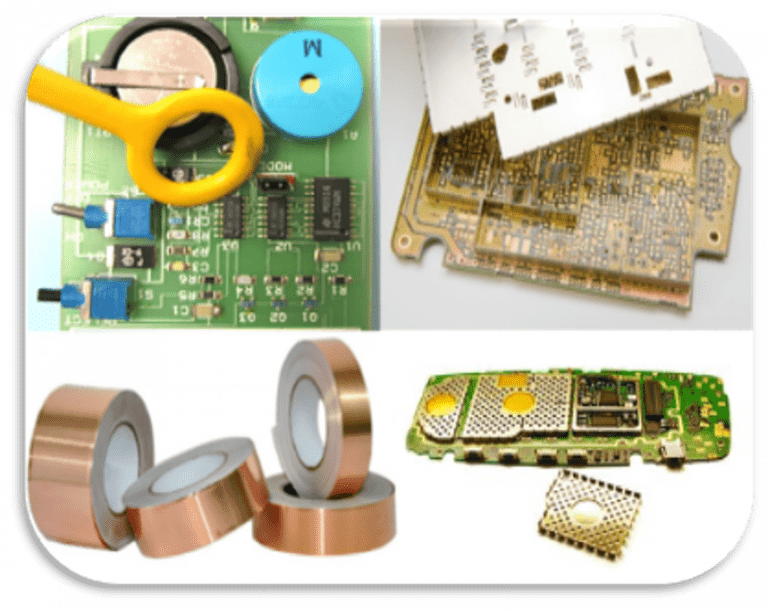In order to overcome such limitations, advanced shielding materials based on carbon, polymers, and ceramic composites have been developed. Electric conductivity is an important factor governing the shielding properties of these materials. Materials are required to possess high electrical conductivity so that they exhibit higher absorption, and hence deliver large shielding effectiveness values.
The use of carbon contents such as carbon nanotubes (CNTs), carbon nanofibers, graphene, etc., as filler in the polymer matrix, significantly enhances its shielding properties, owing to its higher electrical conductivity.
Popularly used polymers for making the polymer carbon composite include Polyaniline (PANI), polydimethylsiloxane (PDMS), ethylene acrylic, siloxane, etc., and conductive filler utilized for their manufacturing includes reduced graphene oxide (RGO), carbon nanotubes, carbon nanoparticles, etc.
The polymeric materials with conductive filler incorporated in them are also sometimes known as intrinsically conducting polymers (ICP), and conductive polymer-based composites (CPC).
Another category of shielding materials is foam-based materials. The advantage of using foam-based materials is their high flexibility and lightweight structure; however, they have little mechanical strength.
Hollow carbon micro balloons (HCM), hollow Poly pyrrole spheres (HPS), copper-coated cenospheres (Cu@CS), etc., are a few examples of synthetic foams that are utilized for making flexible and lightweight shielding materials. Research has shown that the inclusion of carbon-based materials such as carbon nanofiber, carbon nanotube, etc., into the foam significantly improves their shielding capabilities.
Recently, some ferrite polymer composites have also been developed by different researchers and have been shown to perform well as shielding enclosures. Materials such as hexaferrite and spinel ferrites have also been found effective in shielding electromagnetic radiations due to their higher absorption capabilities.
In the past few years, sandwich structures have also become popular in shielding technology. These sandwich structures exhibit frequency-selective shielding which is required for next-generation applications.
In the sandwich structure, the electromagnetic radiation of a specific frequency undergoes multiple reflections, based on the dimensions of the structures, and hence results in significant absorption of that frequency. Due to intense absorption of a specific frequency, these shields exhibit frequency-selective shielding.
For enhancing the absorption, carbon-based materials such as graphene are utilized as a central layer of the sandwich structure; whereas the external layers are usually made up of reflecting surfaces to enable multiple reflections within the structure.
The most recent research has shown that a few of the ceramic materials also exhibit frequency-selective and tunable shielding properties even without requiring sandwich structure and costly material like graphene.
With the advent of internet-of-things, human beings are also required to carry multiple electronic gadgets with them, which are a regular source of electromagnetic radiation.
For providing protection against these radiations, lightweight and thin fabrics with EMI shielding capabilities are also required to be designed. A lot of research has been going on in the electronics and textile industry for manufacturing such fabrics.
The process of manufacturing these fabrics includes coating the thread of the regular fabrics such as Polyethylene terephthalate (PET) with a solution of shielding material. After coating, these threads are used to make clothes with shielding capabilities. For eg, polyethylene terephthalate (PET) fibers coated with conducting materials such as copper solution show good shielding capabilities.
In conclusion, electromagnetic interference (EMI) is a genuine issue that not only influences the normal working of electronic equipment but is also harmful to biological entities.
For attenuating the stary electromagnetic radiations, the electromagnetic interference (EMI) shields made up of appropriate materials such as metals, polymer carbon composites, ferrites, foam, etc., are required. The choice of shielding material is based on the application requirements.
For example, applications requiring high mechanical strength and reflection dominant shielding can employ metals as shields, whereas applications requiring flexible structure could utilize foam-based materials.
Also, for future technologies, the shielding materials with advanced features of frequency-selectivity, tunability, and shielding capabilities over the high-frequency bands are required. Making lightweight and thin fabrics with good shielding capabilities are also desired for future technologies such as wearable and flexible electronics.







